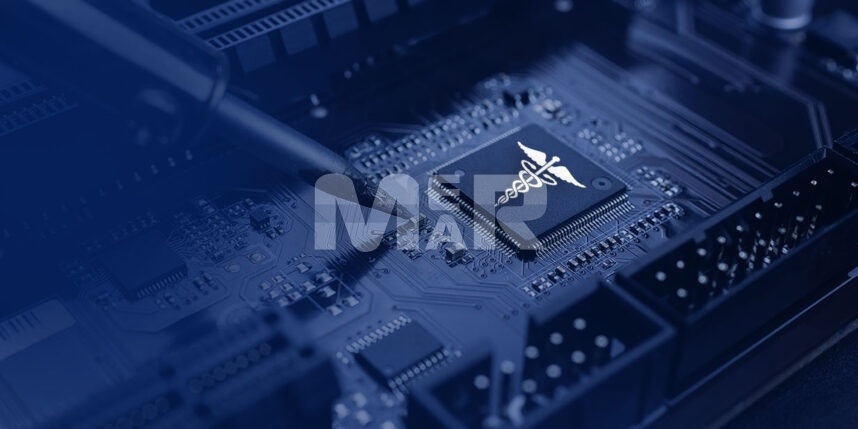Medical Electronics Manufacturing accelerates the growth of the Healthcare Industry during COVID-19 outbreak – How?

Never before in recent times, the medical industry came under this tremendous amount of pressure! The supply chain is totally disrupted in many countries across the world and medical electronics companies have been trying to keep up with the demands and challenges brought on by the global pandemic. These companies have been scaling the supply chains and trying their best to build resilient health infrastructure. They have also been adapting to the post-pandemic medical landscape through collaborations and focusing on data intelligence.
In this blog post, let’s understand how medical electronics manufacturing has handled the challenges and accelerated the growth of the healthcare care industry during COVID-19 times.
Before we delve into how the medical electronics manufacturing companies showed brilliance in handling the situation, let us first understand what are the risks and challenges.
- Shortage of the supply
- Lack of alternative equipment
- Delays in production issues
It is painful to know that many nations have been in dire of medical ventilators, respiratory devices, and other life-saving medical devices. Many electronics manufacturing businesses have been adapting to these uncertain times and meeting the current needs.
From addressing the current manufacturing limitations, supply chain shortages, there are a number of ways for boosting both production and availability of medical products.
Some of the things that went right for the Medical electronics manufacturing company amidst the turbulent times are listed below –
1. Build a resilient local supply chain
Many medical electronics manufacturing companies have increased their supplier network to gather and procure the components. The primary focus remained on building a stronger and resilient supply chain. This helped in mitigating certain risks. There are companies that adopted a more prudent approach by building strong local supply chains. The medical electronic companies also improved the qualifications of the suppliers and restructured their supply chains to quickly adapt to the demand shifts.
Earlier, the supply chains were dispersed and overseas. This is a serious bottleneck in times of pandemic and hence domestic manufacturing got ramped up. The benefits of manufacturing are also numerous like keeping a check on counterfeiting issues, quality checks, inexpensive, and having greater control over the entire process.
2. Data-based Manufacturing
The pandemic uncovered the existing disconnect between the planning and manufacturing of medical electronics. But the scenario has changed now. There accurate forecasts on-demand requirements based on which the manufacturing efforts are calculated. Medical electronics manufacturing companies rely on semiconductor and electronic component suppliers for a broader understanding of what’s happening in the supply chains so they can make procurement resilient.
3. Lead-time reduction
The electronics manufacturing companies have reduced the lead time especially the supplier leads times which used to be around 28 weeks, cut down to half of that now. Proper reviews of the material costs, logistics, product designs, helped reduce to cut down the lead time to around 8 to 12 weeks. Design modifications, prototypes, testing, and other processes in the development cycle are all fast-tracked to meet the unprecedented shift in demand. Some turnkey PCB design and manufacturing companies offer greater benefits like single-source PCB manufacturing.
The ready availability of the core components and materials also helped in reducing the delays in supply acquisition and production. Some even had buffer stocks of the essential component that also helped in these difficult times. Another thing is that an FDA premarket review which used to be mandatory for any modification made to these medical devices is relaxed now. There is an ease of the regulatory burden on the medical electronics manufacturers where FDA also showed discretion on certain modifications to the medical devices.
4. Ramped up production
By complying with various regulations and standards like ISO 13485:2016, IEC 62304, and FDA standards, there is also a ramp-up in the production. By building a proper funnel of medical equipment, there is a dramatic improvement in the production outputs. From parts procurement to engineering training, improvements have been made to ramp up production and establish a resilient supply chain even in the crisis years. Through high-level operations for medical device manufacturing, precision and quality work are ensured.
Medical device manufacturers should also be equipped for creating components for electronic medical devices like life-sustaining medical devices and understand the risks and challenges of electronics design. The manufacturing team especially design engineering teams are geared up with technology and capacity for building mission-critical apps. The build, test, and tracking process have been streamlined for faster building of devices.
5. Maintain Critical Quality Standards
The life-saving devices like ventilators have also adhered to the highest standards in terms of design, function, production, and quality. Reliability is a prerequisite in medical electronics and hence safety is not thrown to winds at all. One of the mandatory quality standards is ISO 13485 that is served as regulatory and legal requirement for ensuring quality management system.
All the safety elements like radiation, thermal, electrical, or mechanical safety were being taken care despite the immediate demands. Most of the companies like Mer-Mar Electronics hold certifications for the entire product development lifecycle like design, development, manufacturing, shipping, etc. of the medical devices. With ISO medical certification, most of the devices are also of quality approved. Hence safe, reliable, and effective PCB assemblies are rolled out.
Companies whose PCB engineering team is trained in surface mount technology and through-hole technology and comply with IPC-610 & J-STD-001, cable harness production complying to IPC-620, etc. FDA also fast-tracking these and also making it vital for getting proper certifications.
Conclusion
There are newer risks and uncertainties that have challenged the status quo and hence to thrive, one needs to look beyond the traditional medical electronics manufacturing. It is true that medical electronics manufacturing companies have seen an unprecedented increase in the demand for medical equipment and have been one of the companies that are hit the hardest by the global pandemic. But good news! With unparalleled innovation, they have sailed through effectively and recorded impressive growth. Mer-Mar Electronics is one of the leading medical electronics manufacturing company that has been manufacturing quality and high precision electronics based on demand anticipation.








